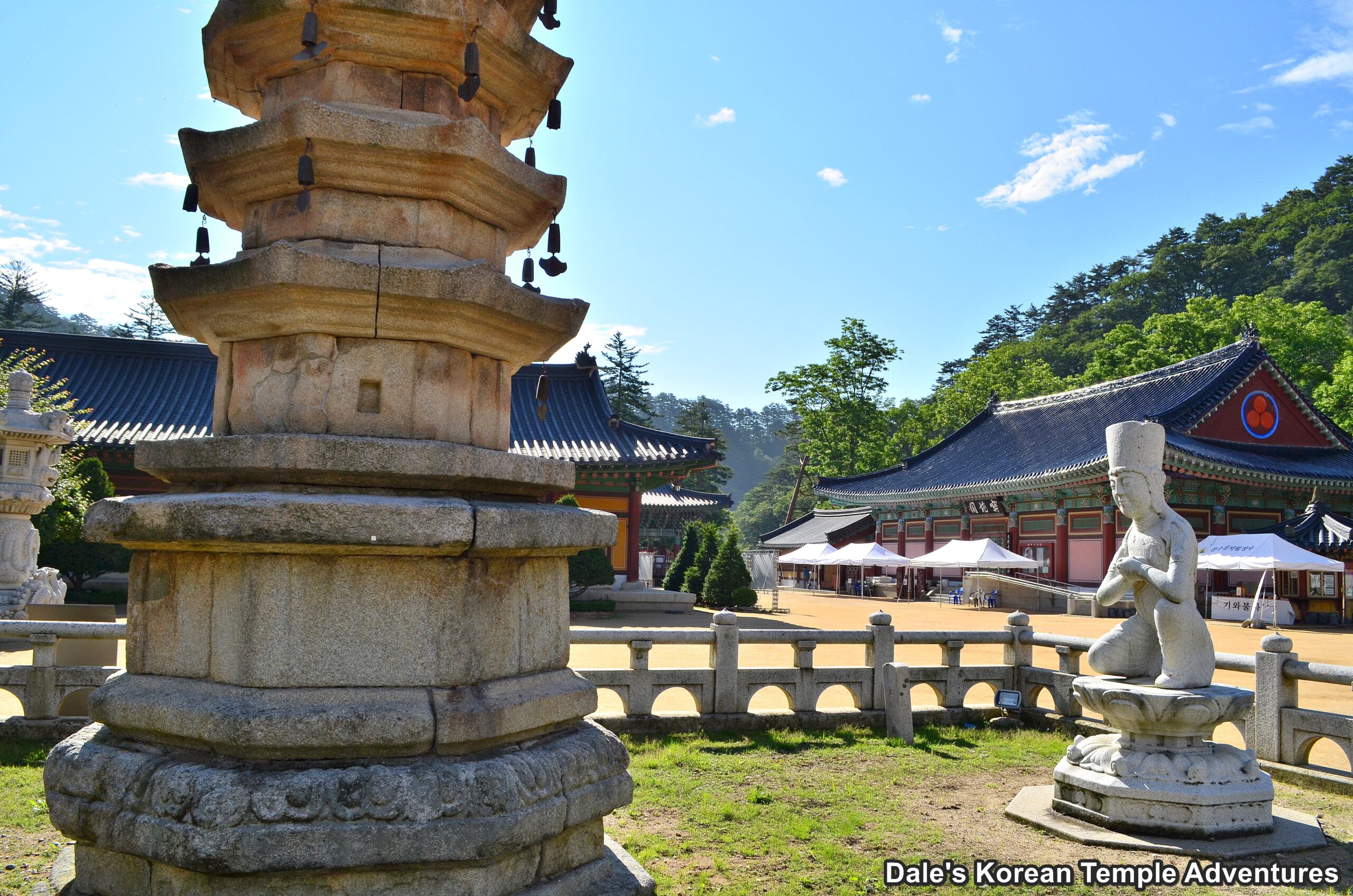
Hello Again Everyone!!
Woljeongsa Temple, which is located in Odaesan National Park in Pyeongchang, Gangwon-do, means “Moon Vitality Temple,” in English. The temple was first founded by the famed monk Jajang-yulsa (590-658 A.D.) in 643 A.D. Mt. Odaesan (1563 m) is a transliteration of the Chinese characters for Mt. Wutai-shan, which is where Jajang-yulsa met the Bodhisattva of Wisdom, Munsu-bosal. But before getting too far ahead of ourselves, and like so many other temples in Korea, Woljeongsa Temple has quite the creation myth surrounding it.
In 636 A.D., and according to the Samguk Yusa (Memorabilia of the Three Kingdoms, circa the 1280s), Jajang-yulsa traveled to Tang China to study Buddhism. Jajang-yulsa had a wish to meet Munsu-bosal (The Bodhisattva of Wisdom) in northern China on Mt. Wutai-shan, or “Five Platforms Mountains,” in English. In China, this location was known as a sacred site for this specific Bodhisattva. At that time, Munsu-bosal purportedly gave Jajang-yulsa the partial remains of Seokgamoni-bul (The Historical Buddha), his robe, and alms bowl. He was told by Munsu-bosal, during this mystical vision, to return home to the Silla Kingdom in search of a remote set of mountains with five peaks that closely resembled Mt. Wutai-shan. If Jajang-yulsa did this, he was told that he could meet Munsu-bosal again. Just like Mt. Wutai-shan, these five peaks were home to Munsu-bosal on the Korean peninsula. The reason that these five peaks meant so much is that they are believed to be like platforms. These platforms act as places where Buddhist deities could sit and teach to the world. They were meant to resemble, on a much grander scale, the statues of Buddhas, Bodhisattvas, and master monks inside temples shrine halls.
Continuing on with our creation myth story, Jajang-yulsa was chanting in front of a statue of Munsu-bosal, hoping to see the actual Bodhisattva. On the seventh night of chanting, the Buddha gave Jajang-yulsa a poem with four lines written on it in Sanskrit. The next day, a monk visited Jajang-yulsa and said that he looked both pale and troubled. Jajang-yulsa told the visiting monk that he had received a poem that he couldn’t understand or even read. The mysterious monk explained that the poem was telling Jajang-yulsa to go to Mt. Odaesan, where he would find ten thousand Munsu-bosals. After seven days, a dragon revealed itself to Jajang-yulsa. The dragon told Jajang-yulsa that the old monk that had visited him was in fact Munsu-bosal. The dragon went on to tell Jajang that Jajang had to build a temple dedicated to Munsu-bosal. So in 643 A.D., Jajang-yulsa reached Mt. Odaesan. However, when Jajang-yulsa arrived at his destination, Mt. Odaesan was covered in a fog. Jajang-yulsa couldn’t see anything. During a three day wait, Jajang-yulsa built a thatched hut that would eventually become the site for the future Woljeongsa Temple.
Before Woljeongsa Temple became a scholastic site for the worship of learning Banya (wisdom, prajna) of Munsu-bosal, Jajang-yulsa built a Jeokmyeol-bogung (five temples that house the sari, or crystallized remains of the Buddha, that Jajang-yulsa brought back with him from Tang China in 643 A.D.) on the central terrace of the five terraces of Mt. Odaesan. On the four other terraces of Mt. Odaesan, there are four hermitages: Sujeongam Hermitage (west), Jijangam Hermitage (south), Sangduam Hermitage (north), and Gwaneum Hermitage (east).
At the end of the Goryeo Dynasty (918-1392), Naong Hyegeun (1320-1376) became of the abbot of Woljeongsa Temple. Naong Hyegeun became the abbot of Woljeongsa Temple after returning to the Korean peninsula after also studying at Mt. Wutai-shan in China. It’s also believed that Naong Hyegeun had mystical experiences with Munsu-bosal. During this time, Woljeongsa Temple was expanded. And the disciples of Naong repaired the older buildings at the temple around this time, as well. In 1833, the temple was destroyed by fire, but it was rebuilt in 1844 by two monks, Yeongdam and Jeongam. More recently, Woljeongsa Temple was completely destroyed, which housed ten buildings at that time, by the Korean Army during the Korean War (1950-53). Woljeongsa Temple, at that time, had become a refuge for opposing forces. The temple would eventually be restored in 1964 by the monk Tanheo (1913-83).
In total, Woljeongsa Temple is home to a pair of National Treasures that share the same number, and one Korean Treasure. Woljeongsa Temple also participates in the popular Temple Stay program.
Woljeongsa Temple is beautifully situated under the watchful eye of Mt. Odaesan inside Odaesan National Park, which became a national park in 1975. You’ll first cross over a wide bridge whose rails are decorated with stone statues of the twelve zodiac generals. Finally passing over the bridge, you’ll need to pass under the temple’s Boje-ru Pavilion. This pavilion is beautifully adorned with fierce Geumgang-yeoksa (Vajra Warriors) and a painting of Munsu-bosal and Bohyeon-bosal (The Bodhisattva of Power) together.
Straight ahead of you, and definitely the first thing you’ll notice, is the early Goryeo-era nine-story, octagonal stone pagoda. This beautiful pagoda is National Treasure #48-1. Out in front of this ornate pagoda is a kneeling Bodhisattva, which is National Treasure #48-2 (the original is now housed inside the temple museum). The pairing of pagoda and Bodhisattva is distinctly Korean, and it’s rarely seen outside of Korea.
Behind the nine-story stone pagoda is the temple’s main hall, which is beautifully framed by a grassy hill to the rear. The rather spacious interior is occupied by a solitary statue of Seokgamoni-bul (The Historical Buddha). The pillars that frame the main altar are adorned with interweaving dragons. And the exterior walls are adorned with Shimu-do, Ox-Herding Murals.
To the immediate left of the main hall is the temple’s Jong-ru (Bell Pavilion). And to the left rear of the main hall are four additional shrine halls. To the far left is the Sugwang-jeon Hall, which houses a highly elaborate relief dedicated to Amita-bul (The Buddha of the Western Paradise). This relief is joined on either side by Gwanseeum-bosal (The Bodhisattva of Compassion) and Daesaeji-bosal (The Bodhisattva of Wisdom and Power for Amita-bul).
Just to the right of the Sugwang is the Samseong-gak Hall, which houses three murals dedicated to Sanshin (The Mountain Spirit), Dokseong (The Lonely Saint), and Chilseong (The Seven Stars). All three murals are beautiful, but perhaps the Chilseong Taenghwa is the most elaborate of the set. Just outside the entrance, on the left-hand side of this hall, is a mural of a rabbit lighting a tiger’s pipe. Have a look for this rather playful mural. The other two halls at the temple aren’t open to visitors. They are the Gaesanjo-gak Hall and the Jinyeong-gak Hall.
Admission to the temple is 3,000 won.
HOW TO GET THERE: To get to Woljeongsa Temple, you’ll first need to get to Jinbu Intercity Bus Terminal. From this bus terminal, take a city bus bound for Woljeongsa Temple. This bus leaves twelve times a day, and the ride lasts about thirty minutes. The bus will let you off just in front of the temple grounds.
OVERALL RATING: 9/10. Woljeongsa Temple is beautifully situated in the folds of Odaesan National Park. Besides the setting, it’s the historic nine-story stone pagoda, and national treasure, that’s the main highlight to Woljeongsa Temple. Other highlights include the stone Bodhisattva making eternal offerings to the pagoda and the shaman murals housed inside the Samseong-gak Hall.
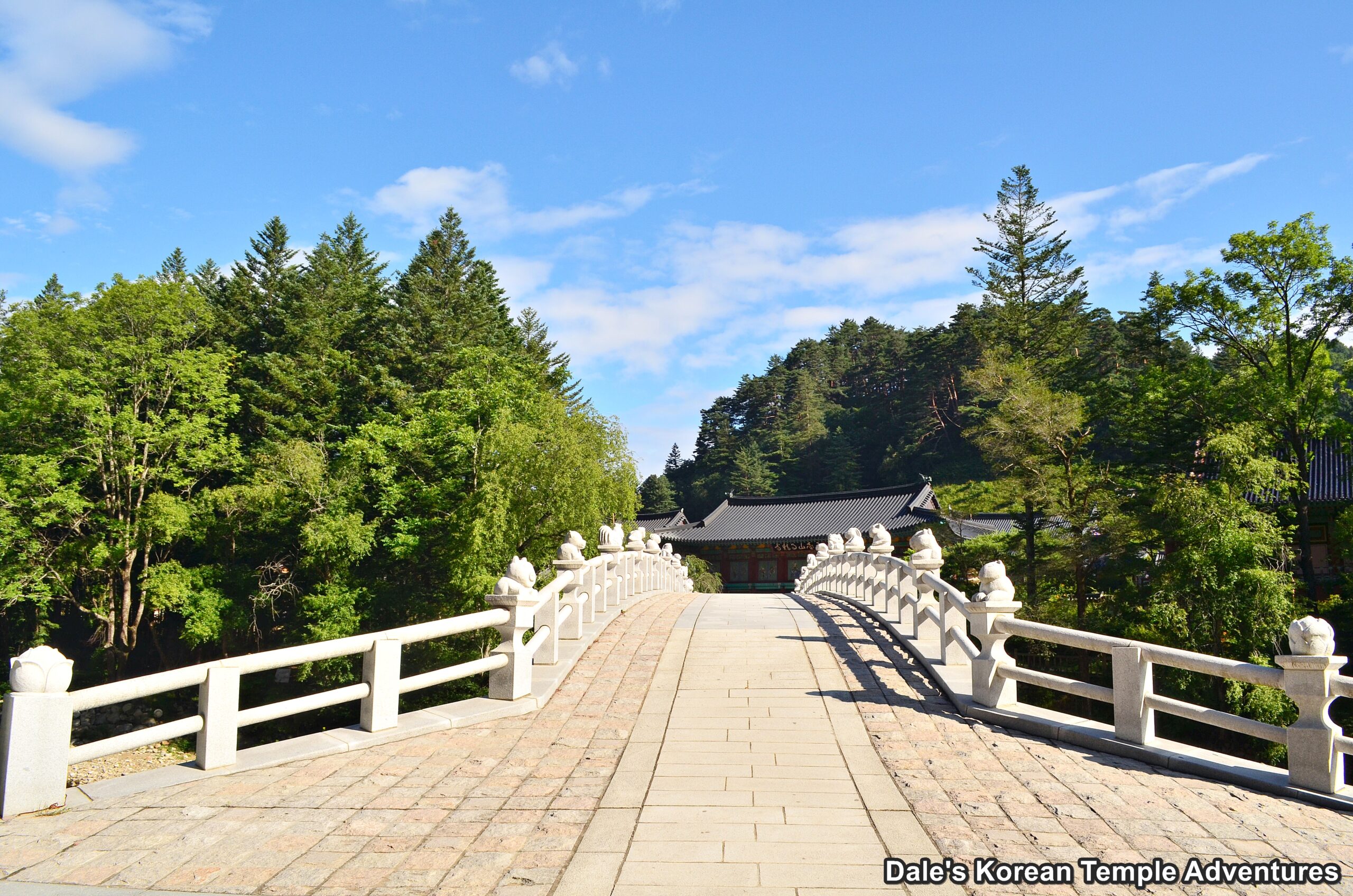
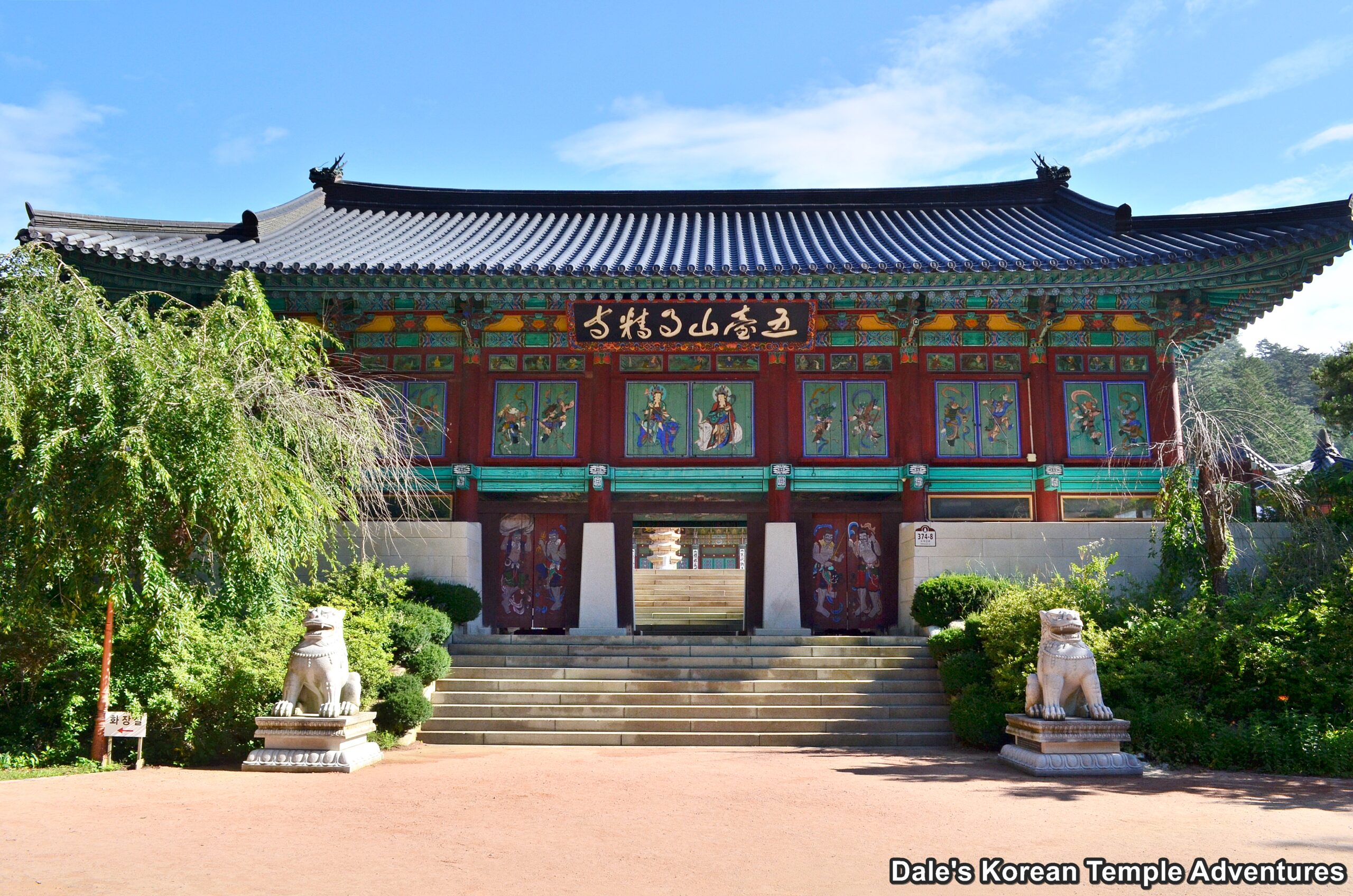
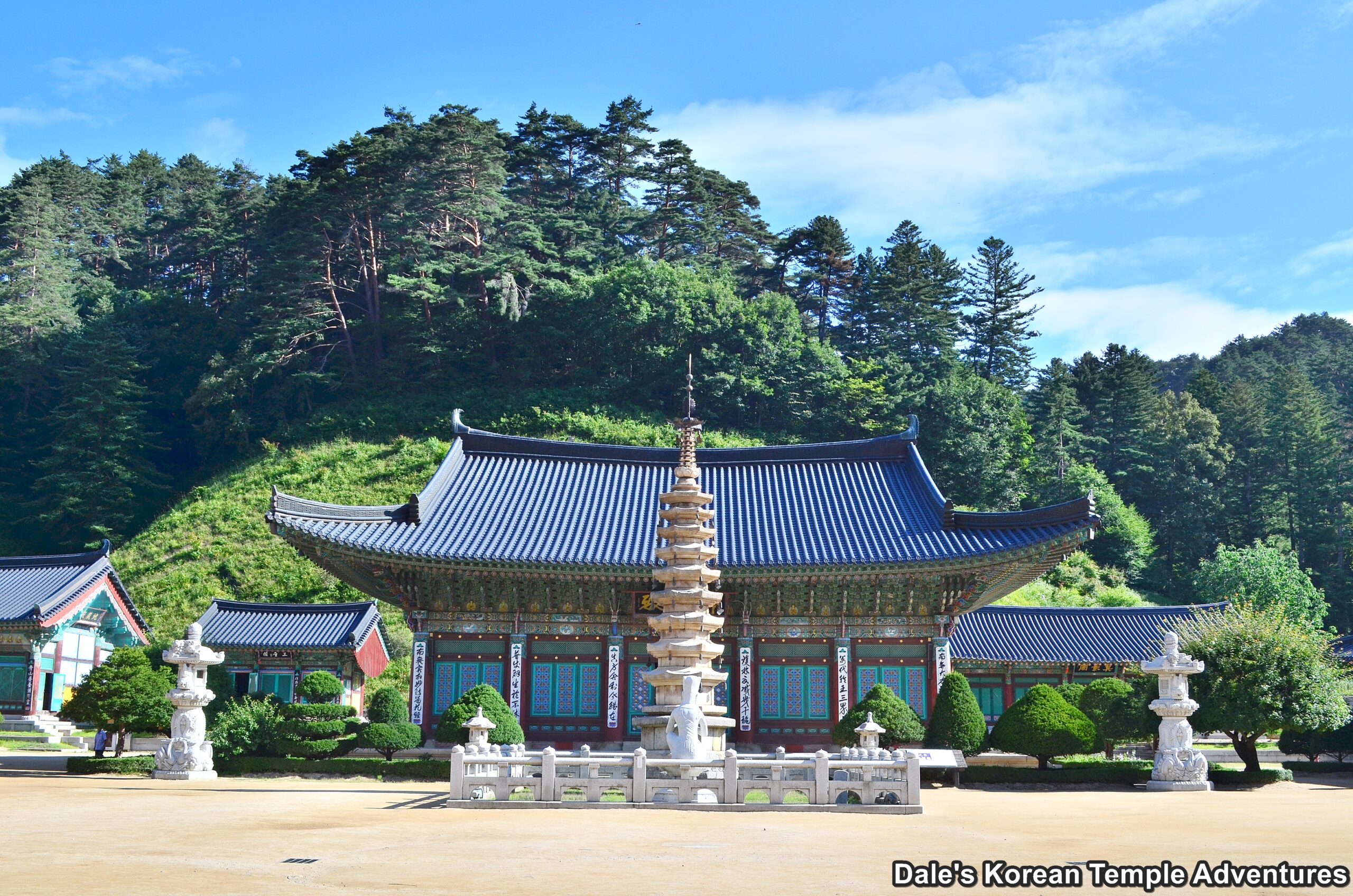
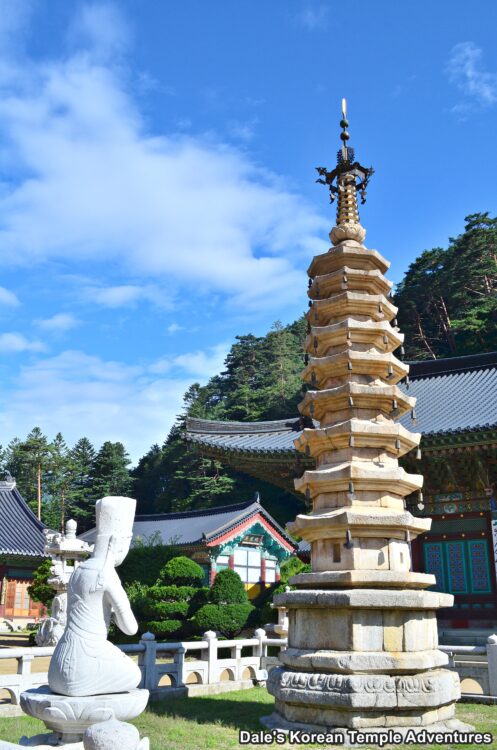
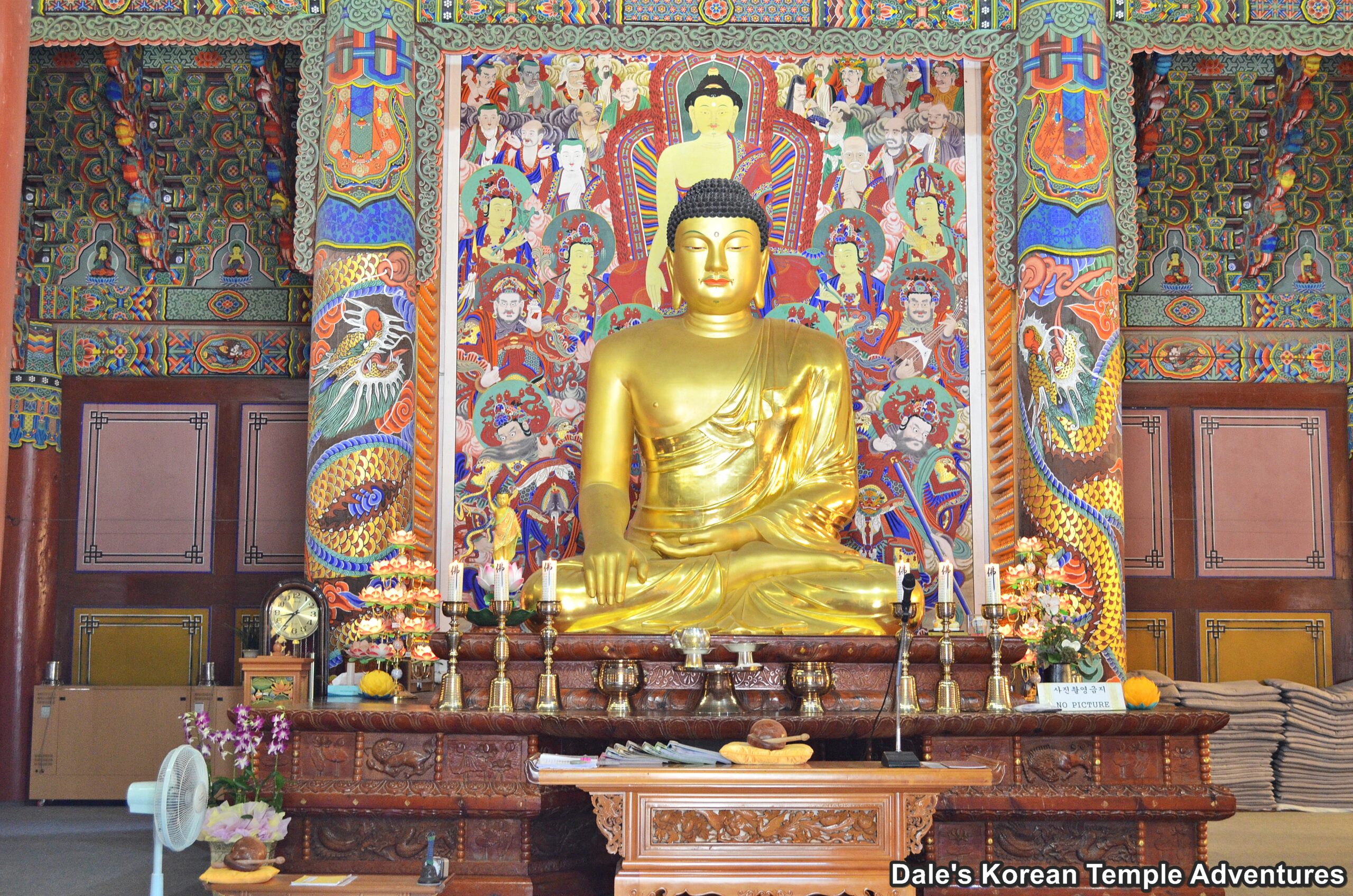
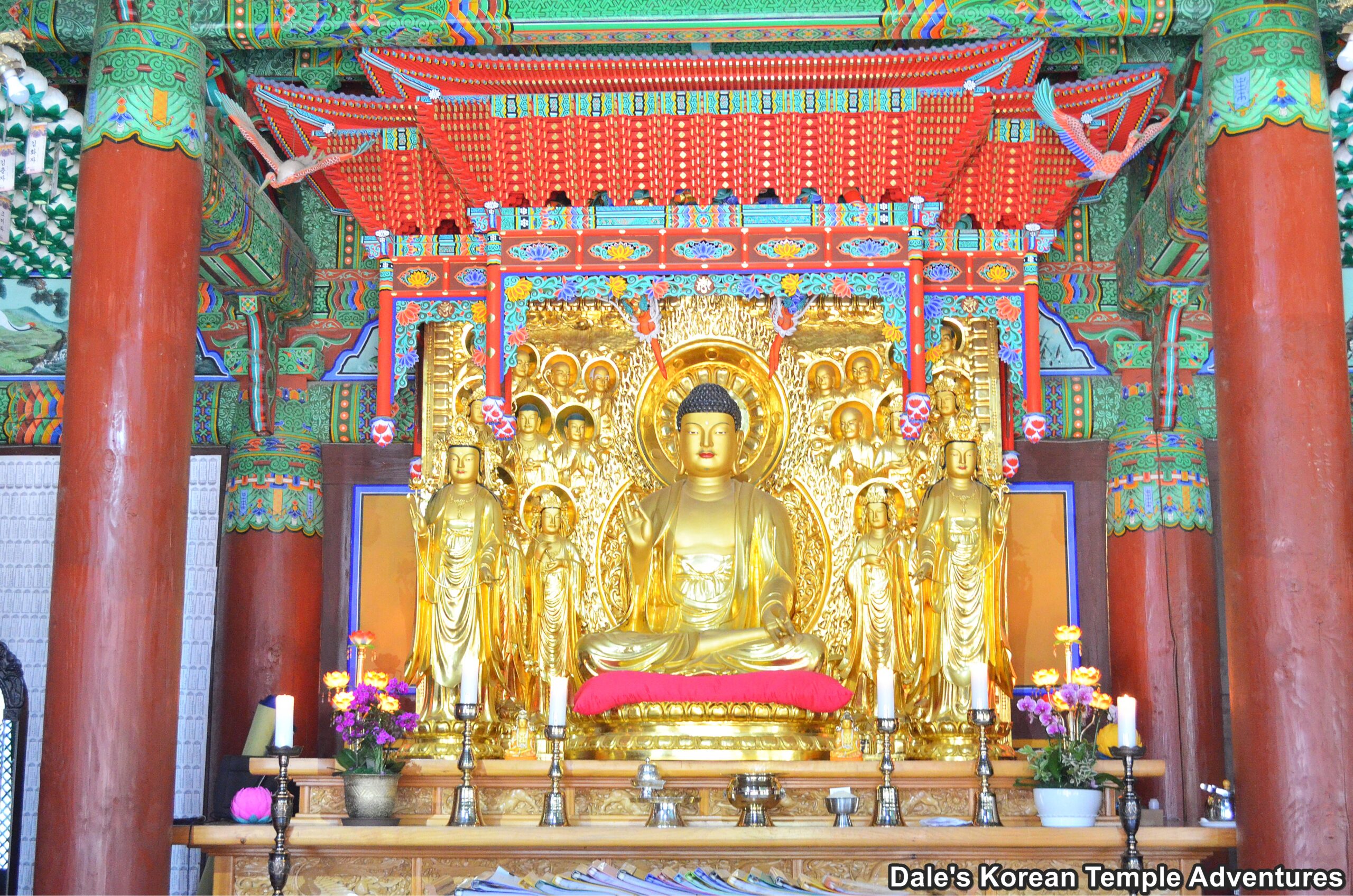
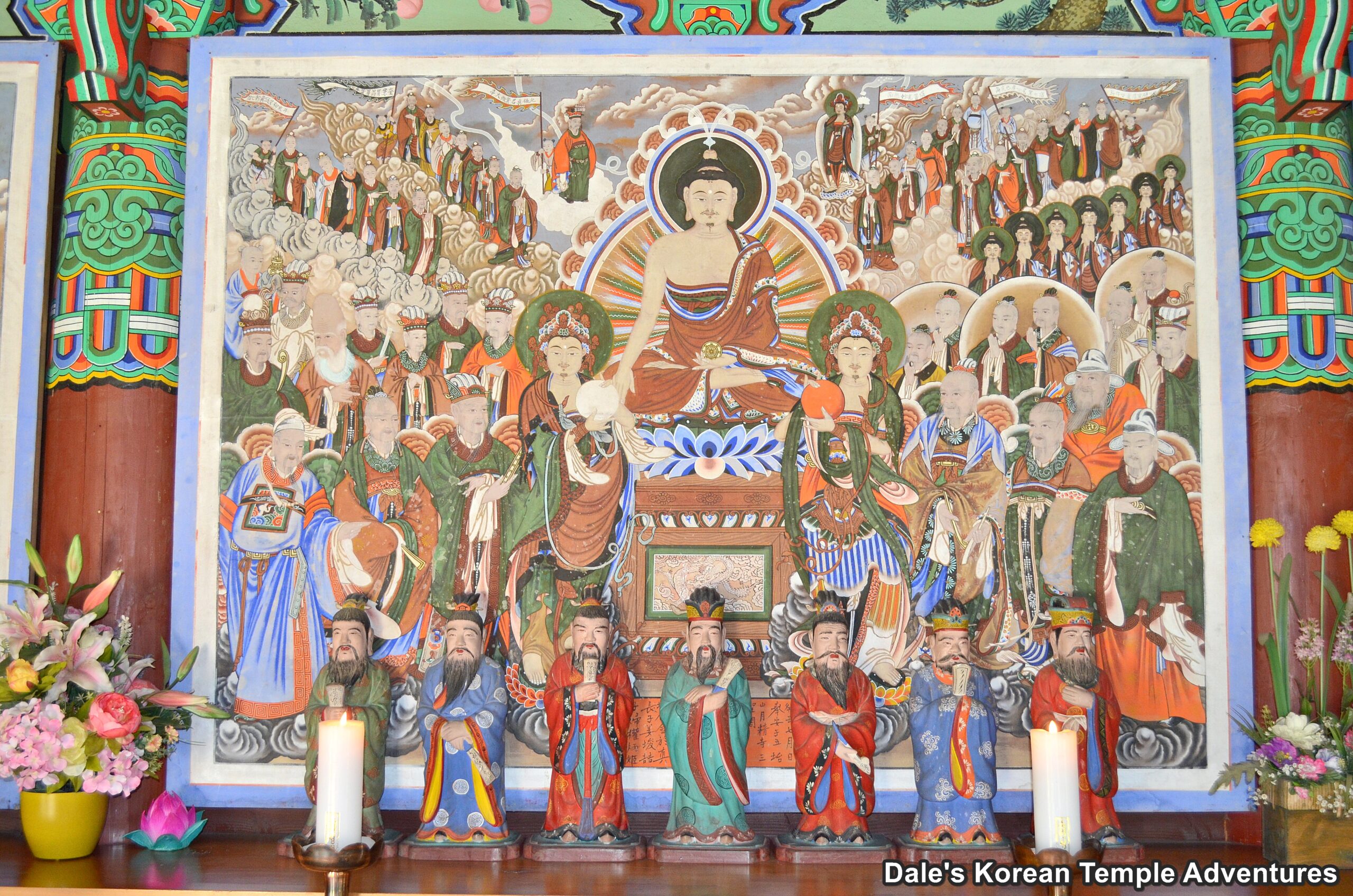



Recent comments